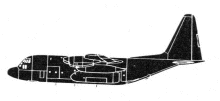Incident Overview

Description
The aircraft was operating a scheduled domestic flight from Port Moresby-Jacksons International Airport (POM) to Mount Hagen-Kagamuga Airport (HGU) when it conducted an air return back to Port Moresby due to weather conditions not being suitable for a landing in Mt Hagen. Approaching 10,000 ft AMSL on descent into POM, the crew actioned the Fokker 70 Normal Procedures Before Approach Check. The flight crew subsequently noticed that the Landing Elevation Setting had not been set for an arrival into POM but was instead, still maintained at about 5,500 ft, which they initially set for HGU. The crew stated to the PNG AIC that since there was a need to increase the rate of pressurizing the cabin on descent, the Fokker 70 Quick Reference Handbook (QRH) Abnormal Procedures for Manual Cabin Pressurization Control Procedure was executed, and they continued with the approach for landing at POM via the ILS procedure for runway 14L. Once the aircraft was established on final approach for runway 14L, the cabin pressure differential indicated about 6 PSI. Seeing that the indication was above the maximum allowable cabin differential for landing (0.13 PSI), the crew terminated the approach and initiated a Go Around at about 16:00, from 1,000 ft AGL straight ahead over runway 14L. The aircraft climbed on runway heading to 2,500 ft AGL and requested clearance from ATC to conduct a right hand turn to track and visually hold at 2,500 ft. ATC provided the clearance as requested by the crew. The crew reportedly actioned the QRH Abnormal Procedure for “Reduced Cabin Pressure Differential Procedure”. The aircraft then left the hold and with ATC clearance, tracked for a right base turn at about 16:14. The crew reportedly conducted a normal approach and landed on runway 14L at 16:20. On disembarking the aircraft , a passenger of the occurrence flight alerted Air Niugini Customer Service that a few passengers from the flight were bleeding from the ears and nose. It was reported that a total of 22 persons were injured; 4 persons had serious injuries and were admitted. PNG AIC rated the occurrence a ‘Serious Incident’. However, per ICAO Annex 13, this occurrence should be considered an ‘Accident’, given the fact that four occupants had suffered serious injuries. CAUSES [CONTRIBUTING FACTORS] There were several factors that contributed to the serious incident. Flight crew actions were influenced by the organisational, operational and environmental conditions. ? Organisational factors like multiple changes to flight crew roster and last-minute notification to crew resulted in task saturation and stress, that prevented crew situational awareness and good crew resource management and decision making on the day of the serious incident. This resulted in the oversight by the crew to set Port Moresby landing altitude in Mt. Hagen. ? Operational and environmental conditions impacted the way crew conducted their operation in Mt. Hagen and in Port Moresby. ? The flight crew did not complete the final step of the Fokker 70 Abnormal Procedures Manual Cabin Pressurisation Control, which was to set the Manual control lever to the ?UP? position before landing to depressurise the cabin and prevent any further pressurisation. Due to not completing the procedure, the cabin differential began to increase again on finals which led to a go-around. Some passengers and cabin crew sustained injuries during the go-around due to a rapid change in cabin pressure. The flight crew then actioned the Fokker 70 Abnormal Procedures for Reduced Cabin Differential.
Primary Cause
Lack of adherence to established procedures, particularly the failure to complete the final steps of the Fokker 70 Abnormal Procedures Manual, leading to an increased cabin pressure differential and a go-around.Lack of adherence to established procedures, particularly the failure to complete the final steps of the Fokker 70 Abnormal Procedures Manual, leading to an increased cabin pressure differential and a go-around.Share on:


